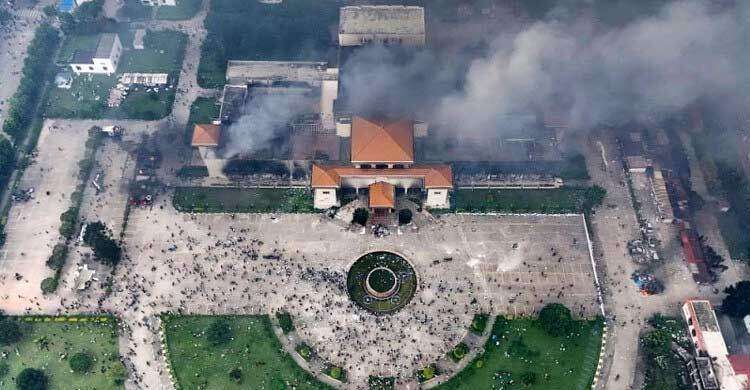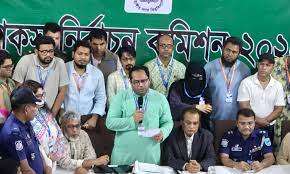 Introduction to Sunamganj District-
Introduction to Sunamganj District-
Sunamganj District is a breathtakingly beautiful region in the Sylhet Division of northeastern Bangladesh. Known for its vast haor wetlands, stunning rivers, and rich folk heritage, Sunamganj is often called the land of water, music, and mysticism. This district is home to the world-famous Tanguar Haor, mesmerizing hills, and vibrant indigenous cultures. If you’re looking for a destination that combines natural beauty with cultural depth, Sunamganj District should be on your travel list.
Historical Background of Sunamganj District-
Sunamganj has a deep-rooted historical significance dating back to the early Muslim rule in Bengal. It was named after Sunam Acharya, a Hindu landlord, and gradually evolved into an administrative region during the British colonial period. It became a separate district in 1984, previously being a subdivision under Sylhet.
Sunamganj was a prominent hub during the anti-British movement and has contributed richly to the socio-cultural development of Bangladesh, particularly through Baul songs and folk traditions.
Geographical Location and Natural Features
Sunamganj District lies in the northeastern region of Bangladesh, bordering the Indian state of Meghalaya. The district is characterized by:
- Huge seasonal wetlands known as haors
- Lush green hills and forests
- Rivers originating from the Khasi Hills
- Fertile plains and scenic valleys
The district covers an area of about 3,670 sq. km and is mostly submerged in water during the monsoon, making it a unique ecosystem for migratory birds and aquatic life.
Administrative Divisions of Sunamganj-
Sunamganj District is divided into 12 upazilas (sub-districts), including:
- Sunamganj Sadar
- Tahirpur
- Dowarabazar
- Derai
- Jagannathpur
- Jamalganj
- Chhatak
- Bishwamvarpur
- Sullah
- Shantiganj
- Dharmapasha
- Madhyanagar
Each of these upazilas offers distinct natural and cultural attractions.
Top Tourist Attractions in Sunamganj District-
Tanguar Haor – The Crown Jewel
Tanguar Haor is undoubtedly the most famous attraction in Sunamganj. Covering over 100 square kilometers, it is a Ramsar wetland site and a sanctuary for hundreds of bird species. During winter, thousands of migratory birds create a spectacular scene, making it a paradise for bird watchers and photographers.
You can explore the haor by boat, witness floating villages, and even spend the night on a houseboat for a magical experience.
Jadukata River and Barikka Tilla
This clear-blue river flows along the Indian border and offers surreal views, especially near Barikka Tilla, a popular picnic spot surrounded by hills and crystal-clear water. It’s one of the most Instagram-worthy spots in the district.
Shimul Bagan (Shimul Tree Garden)
Located in Tahirpur, Shimul Bagan is a forest of red-flowered Shimul trees. During February–March, the entire area turns red as the flowers bloom, creating a dreamlike landscape.
Lakkhachora Waterfall
One of the most scenic waterfalls in Sunamganj, Lakkhachora Waterfall is located near the Indian border and accessible through a beautiful hilly trail. It’s best visited in the monsoon when water flow is high.
Barek Tila
Barek Tila is a small hill on the bank of the Jadukata River offering panoramic views of the surrounding region. The turquoise water and limestone hills make it a peaceful escape for nature lovers.
Culture and Festivals of Sunamganj District-
Sunamganj is famous for its Baul music, mystic poetry, and rural folk culture. It’s the birthplace of renowned mystic poet and philosopher Hason Raja, whose house has been turned into a museum.
Locals celebrate:
- Boishakhi Mela (Bengali New Year fair)
- Hason Raja Festival
- Fishing Festivals during the monsoon season
These events reflect the district’s deep-rooted musical heritage and community spirit.
Indigenous Communities and Ethnic Diversity-
Sunamganj is home to several indigenous and ethnic groups, including:
- Khasi
- Garo
- Manipuri
These communities live in hill settlements and sustain their unique lifestyles, languages, and religious practices. Visitors can learn about their culture, buy handmade crafts, and even stay in eco-friendly tribal villages.
Local Cuisine of Sunamganj-
Sunamganj offers mouth-watering traditional dishes that reflect both Bengali and tribal flavors. Popular dishes include:
- Freshwater fish curry
- Duck with bamboo shoots
- Rice and mashed vegetables
- Panta Bhaat (fermented rice)
- Traditional sweets like Chomchom and Rasmalai
Food lovers will especially enjoy local haor fish dishes, caught fresh from rivers and wetlands.
Transportation and How to Reach Sunamganj-
Getting to Sunamganj District is relatively easy:
- By Road: Buses run regularly from Dhaka and Sylhet to Sunamganj town.
- By Train: Sylhet is the nearest railhead; from there, buses or microbuses go to Sunamganj.
- By Air: The nearest airport is Osmani International Airport in Sylhet, about 80 km from Sunamganj.
Within the district, local transport includes boats (in haor regions), motorbikes, CNGs, and rickshaws.
Accommodation in Sunamganj District-
While Sunamganj doesn’t have luxury hotels, it offers decent accommodations for travelers:
- District Guest House
- Sunamganj Circuit House
- Budget hotels in Sunamganj Sadar and Tahirpur
- Houseboats on Tanguar Haor (pre-booking required)
Eco-tourism and community-based tourism initiatives are also gaining popularity.
Education and Health Facilities-
The district is improving steadily in education and health:
- Sunamganj Government College
- Jamalganj Degree College
- Sunamganj Medical College (under development)
Healthcare services are available through Upazila Health Complexes and the Sunamganj District Hospital, though rural areas still face medical service challenges.
Economy of Sunamganj-
Sunamganj’s economy relies on:
- Agriculture (especially paddy)
- Fishing
- Limestone and sand extraction
- Remittances from overseas (especially Middle East and UK)
The district plays a vital role in the country’s wetland-based agriculture.
Challenges Facing Sunamganj District-
- Frequent flooding due to low elevation
- Poor rural infrastructure
- Seasonal isolation during monsoon
- Environmental threats to haor biodiversity
Efforts are ongoing by government and NGOs to improve infrastructure, education, and environment-friendly tourism.
Final Thoughts on Sunamganj District-
Sunamganj District is a hidden treasure trove of natural wonders and cultural richness. From the stunning views of Tanguar Haor to the mystic sounds of Baul music and the simplicity of rural life, Sunamganj offers something for every kind of traveler. It’s a place where water meets sky, where traditions flow with rivers, and where your soul finds peace.
FAQs About Sunamganj District-
What is Sunamganj District famous for?
Sunamganj is famous for Tanguar Haor, its scenic beauty, folk music, and being the birthplace of mystic poet Hason Raja.
What is the best time to visit Sunamganj?
October to March is the best time when the weather is dry and the haor is accessible by boat.
Can I stay overnight in Tanguar Haor?
Yes, you can book houseboats or local boats for overnight stays, but it’s advisable to go with a local guide or tour operator.
Is Sunamganj good for eco-tourism?
Absolutely. With its wetlands, hills, rivers, and indigenous villages, Sunamganj is a perfect eco-tourism destination.
How do I travel within Sunamganj?
Local transportation includes boats, CNG auto-rickshaws, and motorbikes. Roads are improving but can be challenging in monsoon.












